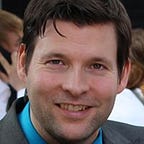Geography and Economics
How the geography of a country determines its historical economical development
If you discovered an Earth-like planet with a telescope so powerful that you could see where the oceans, rivers, landmass and mountains are, but not what the cities look like, could you still predict where the wealth and poor countries are?
Likewise could aliens peering at the earth, seeing the major geography, but being incapable of actually viewing the people, our buildings and lifestyles, be able to guess where the wealthy and poor countries are located?
Both Jared Diamond in his book Guns, Germs and Steel as well as Adam Smith in his book The Wealth of Nations, describe the importance of geography in long term economic development, but from different perspectives. Adam Smith was the founding father of free market economics, while Jared Diamond is a bit harder to pigeon hole as he is both an ecologist, geographer, biologist and anthropologist.
If you look at the made up landmasses I’ve shown below, could you guess which of these would likely experience the most rapid economic progress and which ones the slowest?
